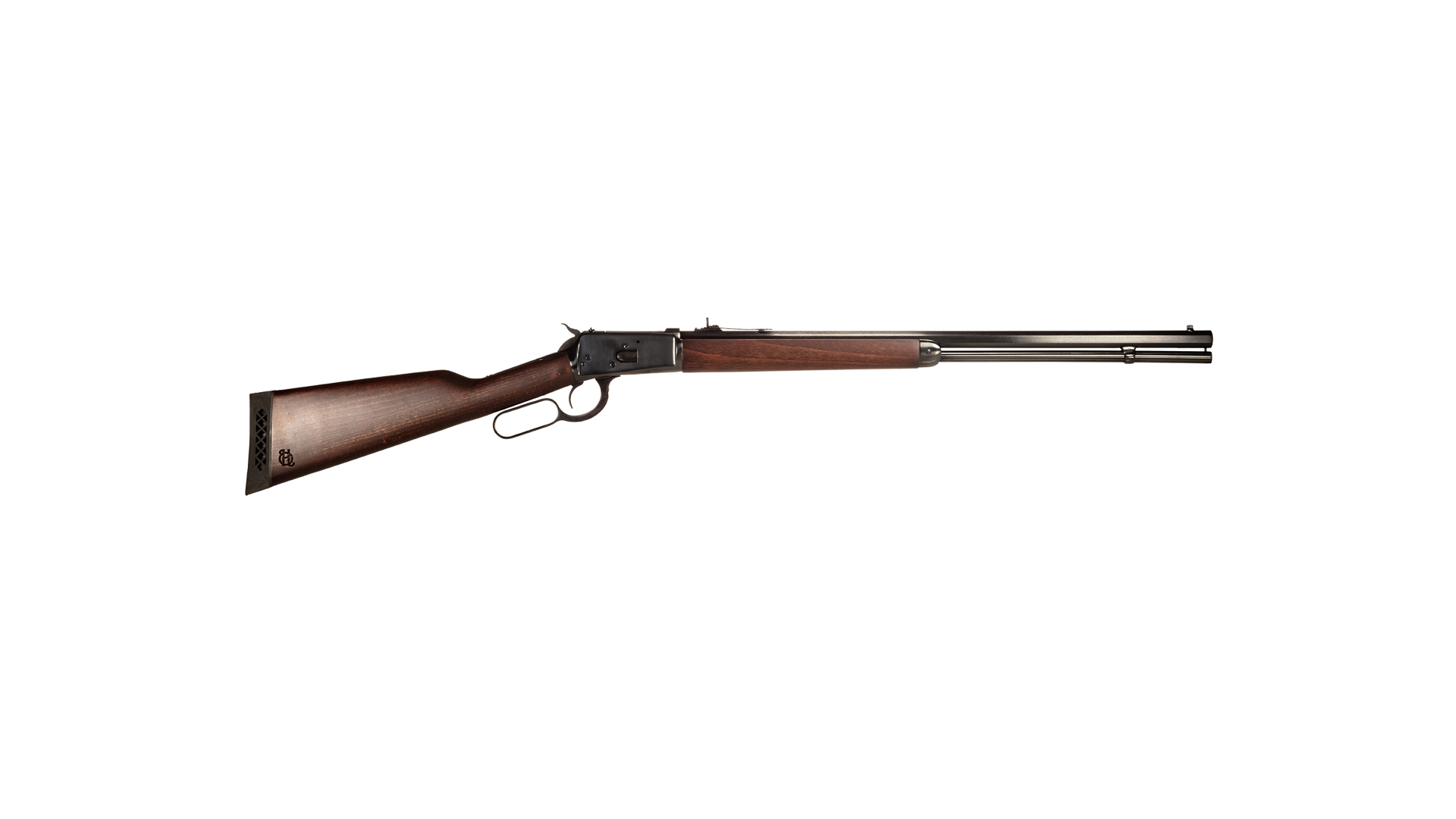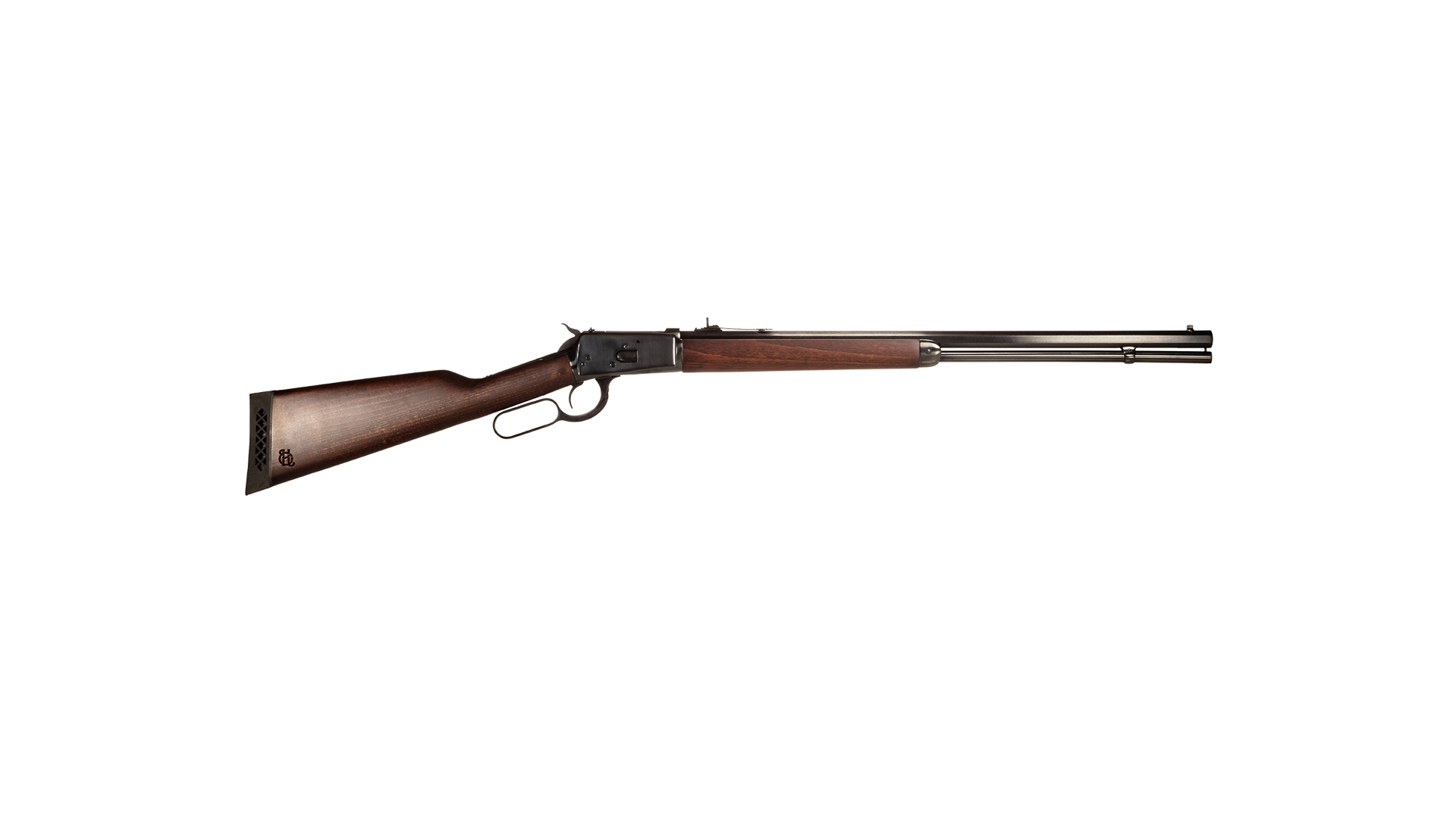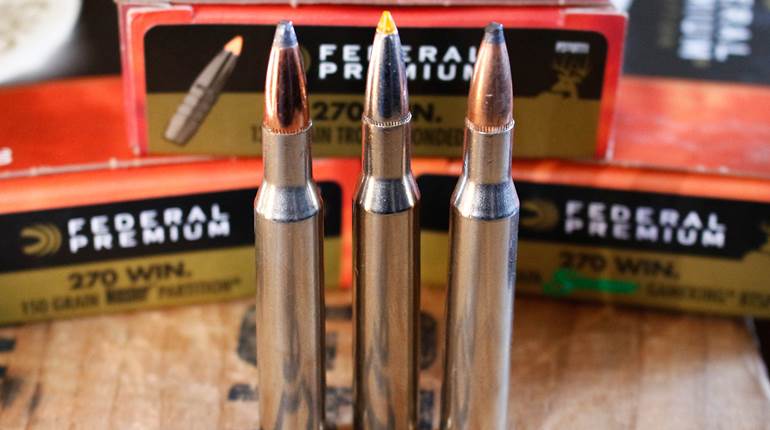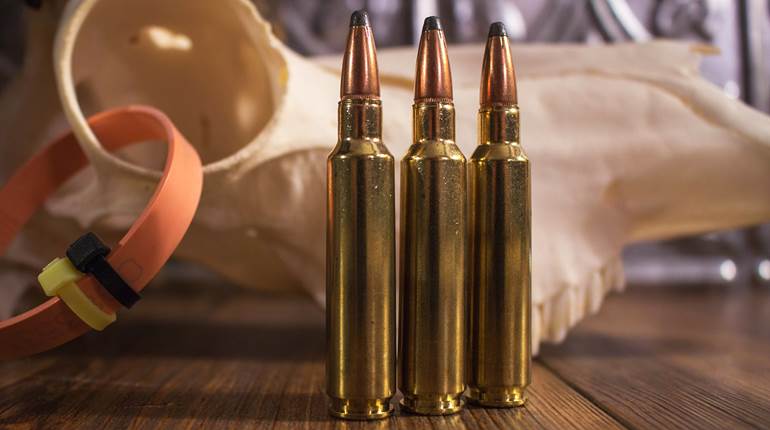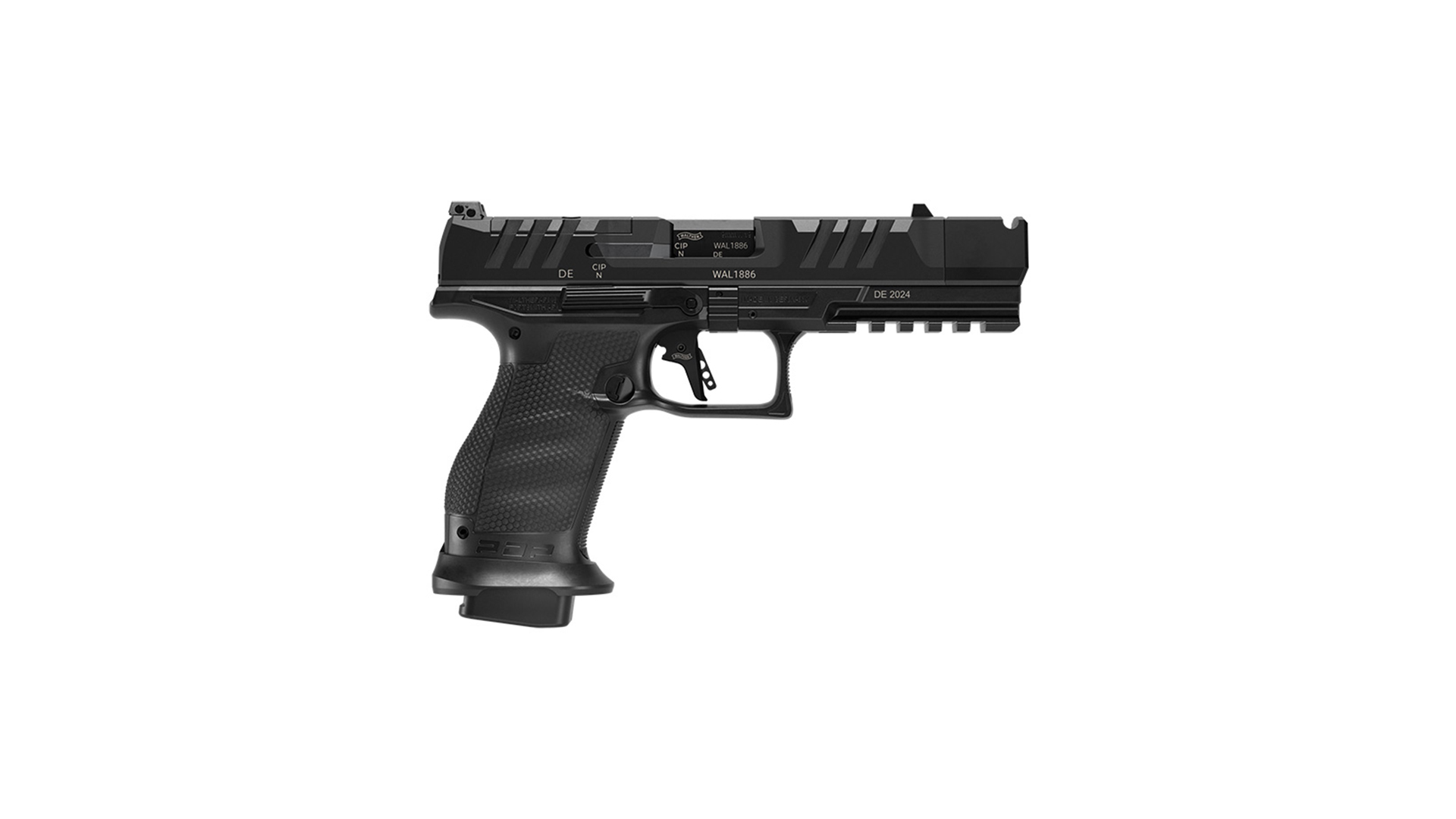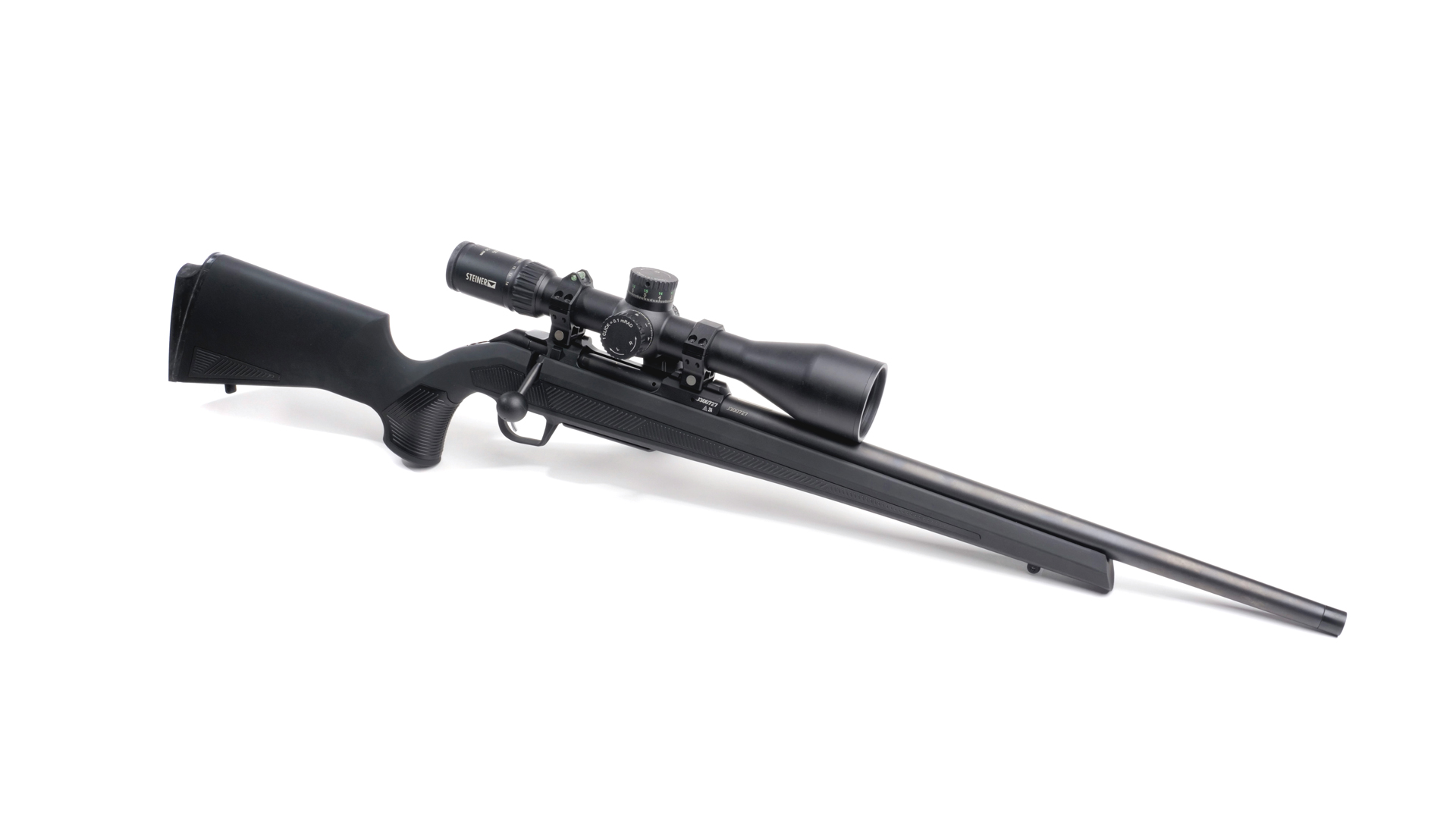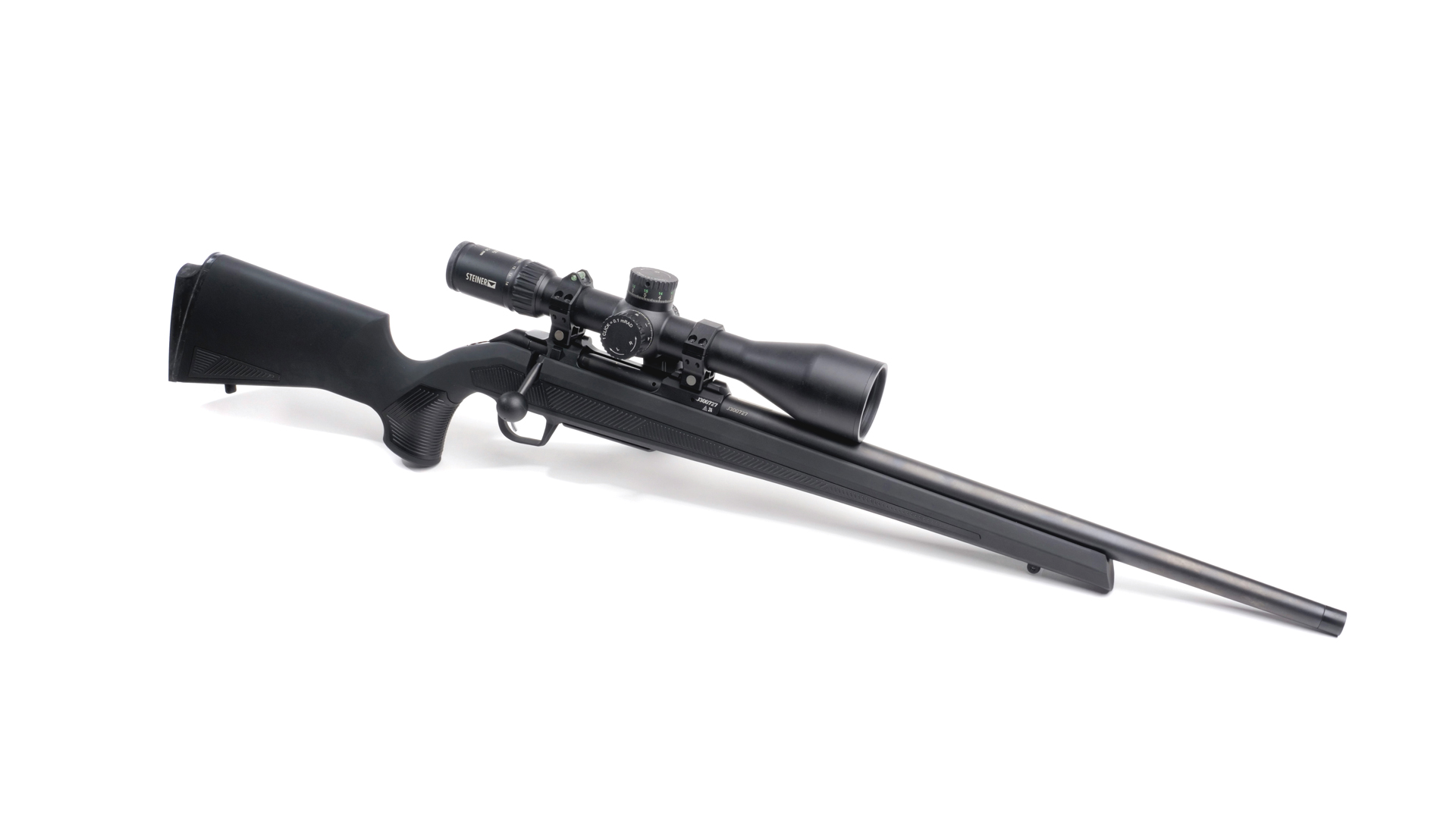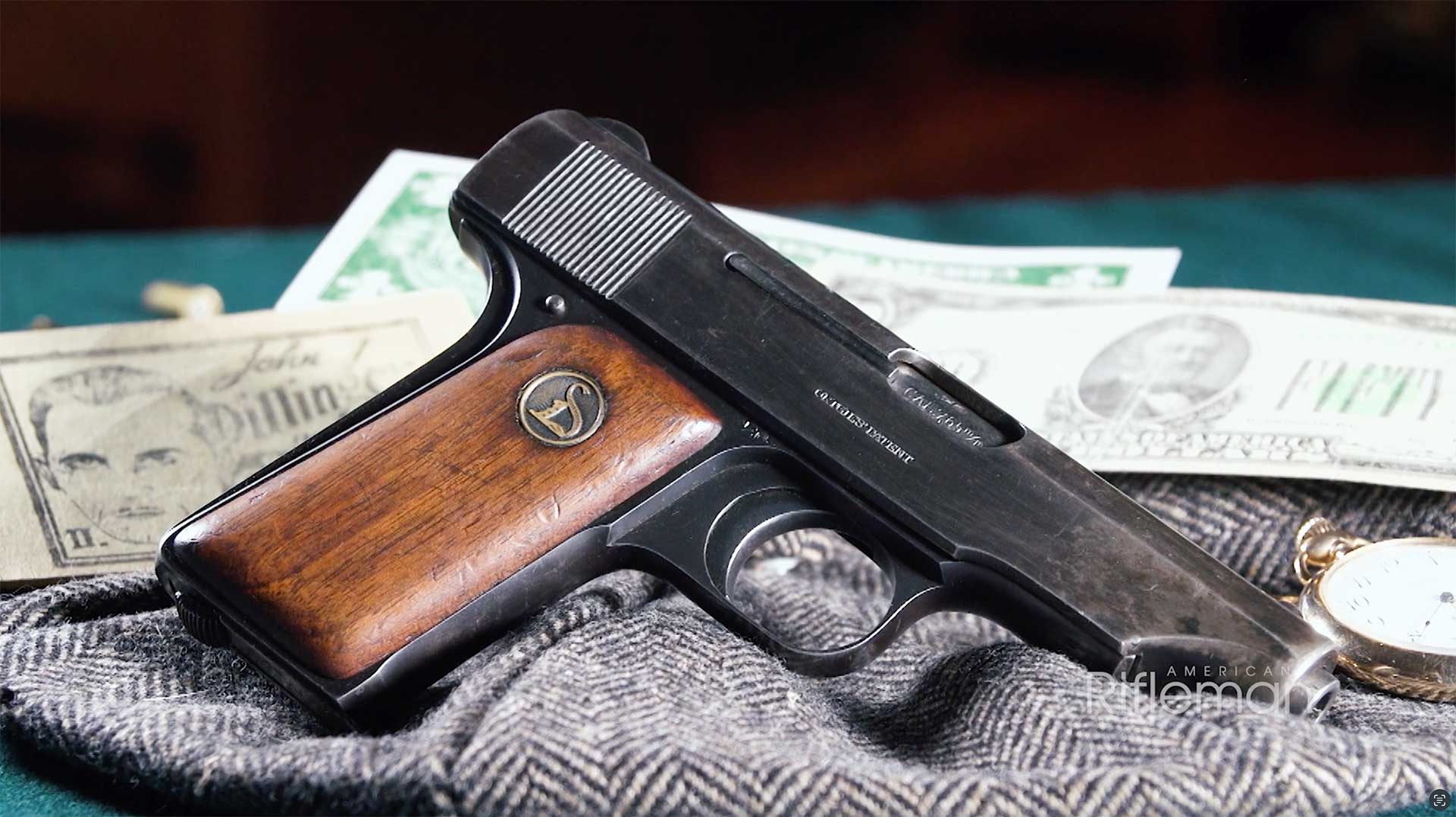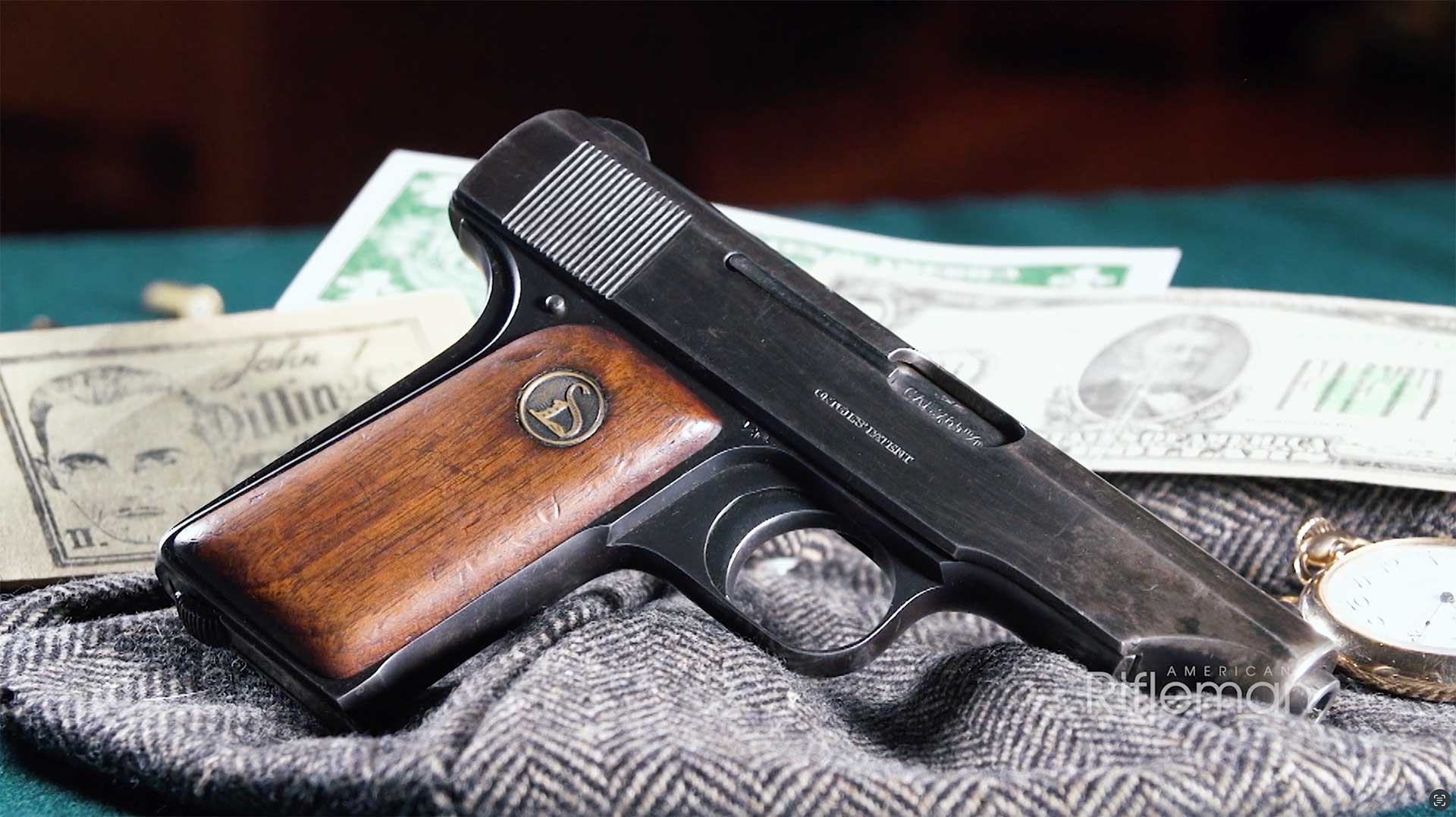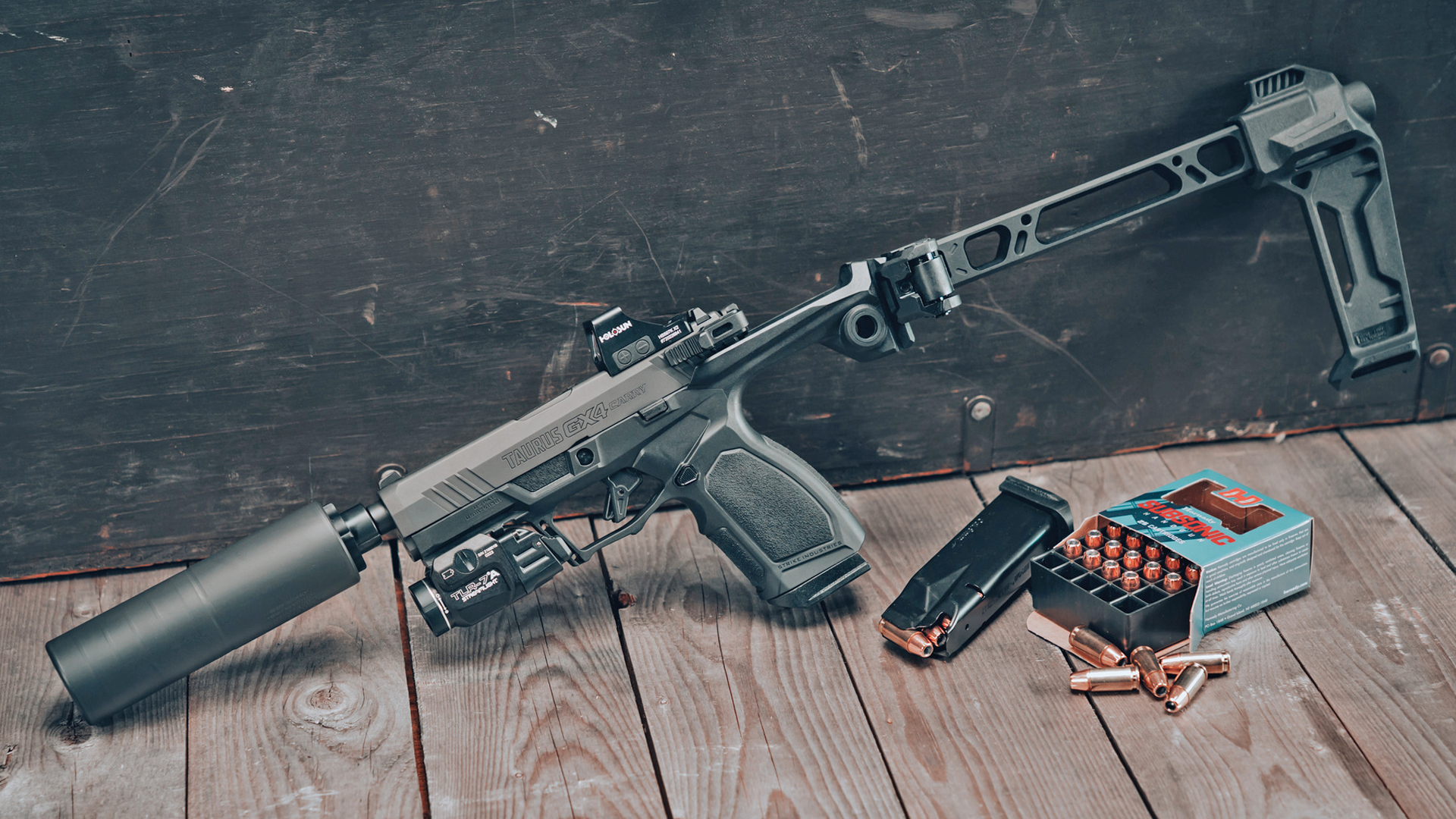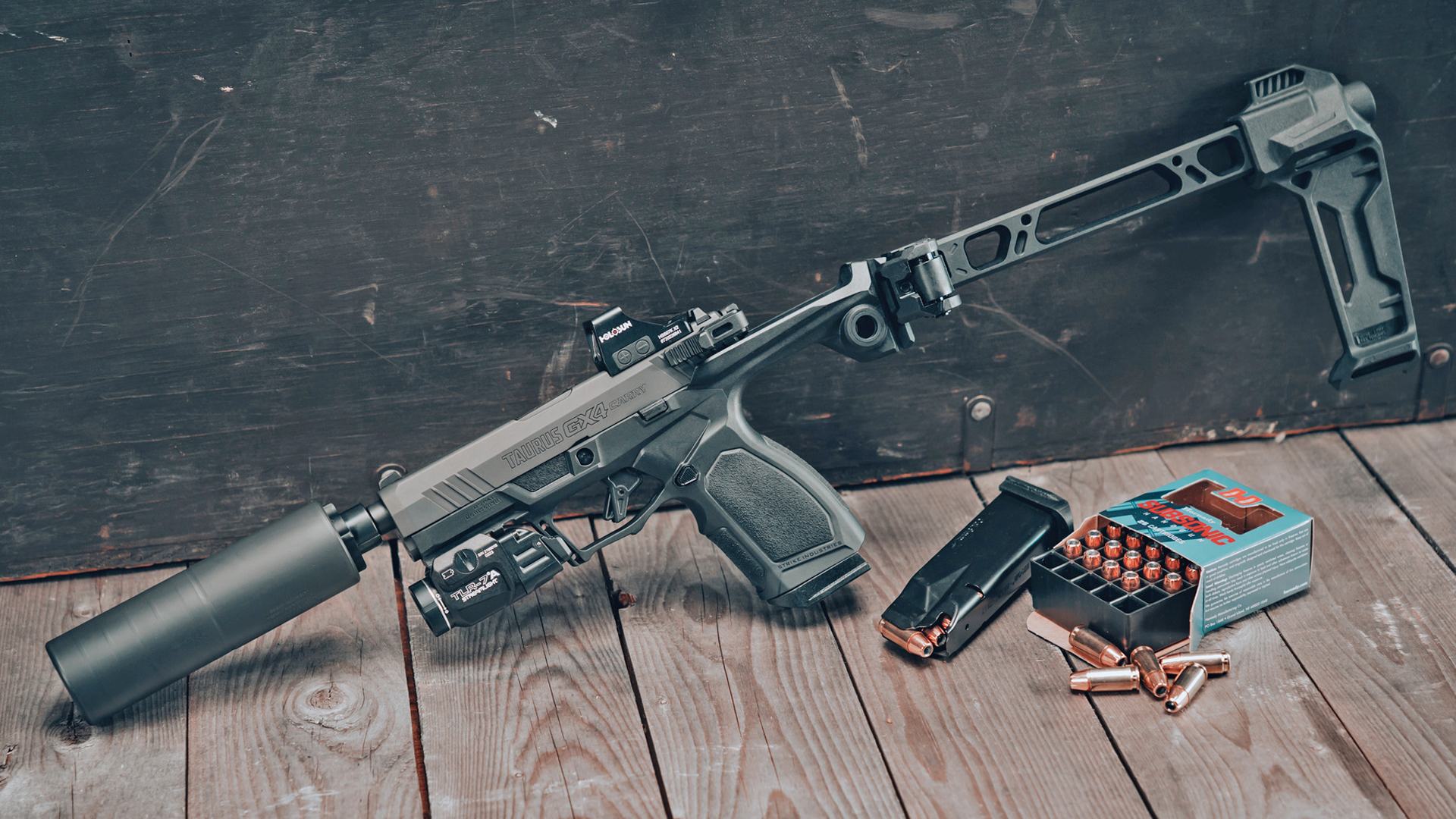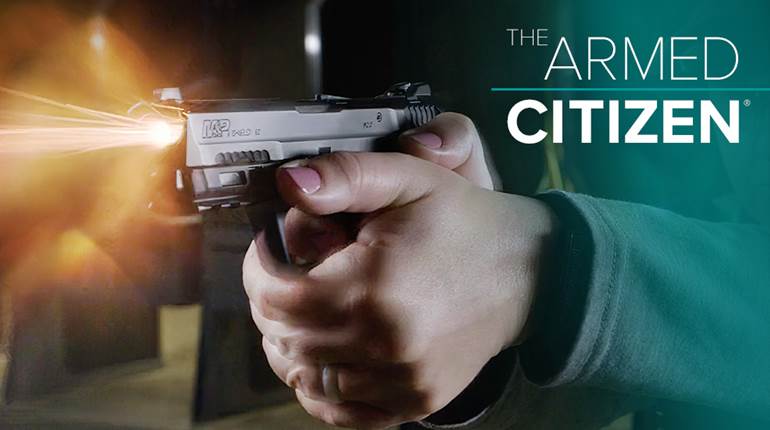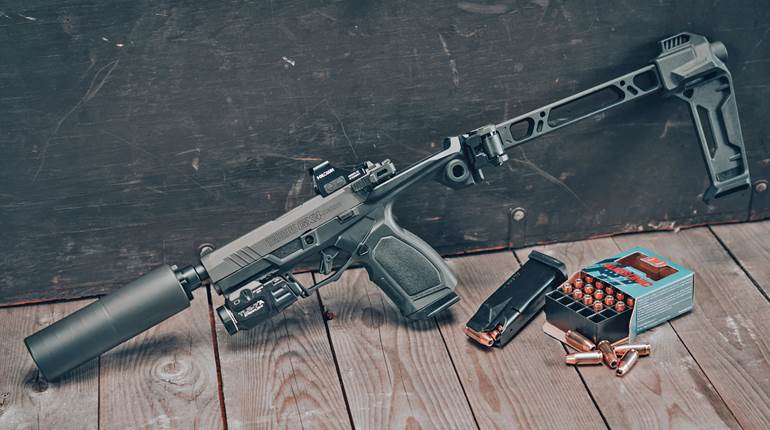
The U.S. Army’s adoption in 1936 of the “U.S. Semiautomatic Rifle, Caliber .30, M1,” or the M1 Garand, was an epochal event in the development of military small arms. The M1 was the first standardized semi-automatic service rifle, and proved its worth in World War II and Korea as the premier battle rifle of its era. Nonetheless, despite the well-deserved laurels eventually won by the M1, the development and adoption of the Garand rifle was rife with controversy and turmoil. There were a number of vociferous critics at the time who believed the Garand was an unsuitable rifle and its adoption would be a monumental mistake. Some of the M1s opponents were motivated by sincere concerns about the viability of the arm, while others had financial interests in competing semi-automatic designs. Among the most notable of the latter group were John D. Pedersen and Melvin M. Johnson, Jr., who each developed semi-automatic rifles of their own design that were, in their opinion, superior to the Garand. These detractors were eventually proven wrong, but for a precarious period of several years, there were serious questions as to whether the M1 would actually become our primary military service rifle.
Soon after its adoption, the widespread concerns about the M1 rifle resulted in the Ordnance Dept. contacting Winchester Repeating Arms Co. to perform an extensive evaluation of the M1. During the course of its “consultation” on the M1 rifle, the Winchester management and engineering team became convinced that the rifle was, indeed, seriously flawed. The company prepared a scathing critique and enumerated its numerous faults, real and perceived. The following is a portion of Winchester’s evaluation of the M1 Garand rifle:
“… The [Garand rifle] has been designed by parties apparently entirely unfamiliar with manufacturing and, as a consequence, the parts are intricate and very expensive to make. It is our belief that this gun will cost to manufacture approximately three times as much as it costs to make the Springfield bolt action ’03. This failure from a design end puts a very heavy mechanical burden on Springfield Armory to manufacture the gun and get it so that it will work. It puts a heavier burden on commercial companies which may be asked to produce the gun to be interchangeable with Springfield. We do not believe that it is a practical gun for quantity production in time of emergency … .”
“We would seriously recommend that the Ordnance Department review this gun carefully before proceeding to sink more money into it as it is our unqualified belief that the model will have to be changed before a satisfactory gun can be arrived at.”
Clearly, there were real concerns as whether or not the Garand was, in fact, a suitable rifle. There is no indication that the Winchester management team was giving anything but its honest assessment of the Garand in the report. However, like any successful enterprise, Winchester was always looking for new business opportunities. Its leaders felt the pervasive concerns about the Garand rifle might result in the government seeking an alternative, and the company believed it would be prudent to come up with a proprietary semi-automatic service rifle of its own. An example of Winchester missing out on a potentially lucrative government contract for arms during World War I was related in a memorandum from Edwin Pugsley, the long-serving general superintendent of Winchester:
“About 1908 or ’09, the … Winchester Company made a decision which had rather far reaching results. The decision was made to make a semi-automatic shotgun instead of a bolt-action rifle. This resulted in the development of a very troublesome shotgun mechanism and left the company without a bolt-action rifle that could be adapted for military purposes when the First World War came along. Being caught, therefore, without the basis of a military rifle, we were forced to make the British Enfield … .
“Shortly after Western [Cartridge Company] acquired the Winchester Repeating Arms Company, [I felt] there was grave danger of our being caught again without a military model in case of war, [and I] began agitating that the company take some interest in a semi-automatic military arm. Investigation was first made as to the possibilities of acquiring the commercial rights to the Garand rifle and later the Pedersen gun was rather thoroughly investigated.”
For a variety of reasons, Winchester did not acquire production rights to the Garand or Pedersen rifles. However, the firm was interested in a semi-automatic .30-caliber rifle being developed by Jonathan E. Browning, half-brother of the famed John Moses Browning. The company soon obtained the rights to the design, and Winchester engineers-assisted by Jonathan Browning-continued refining the rifle. Unfortunately, the 80-year-old Mr. Browning died on May 16, 1939, while working on the gun at the New Haven plant.
Even as Winchester was developing the Browning-designed semi-automatic rifle, the War Dept. made plans to issue an “Educational Order” to a commercial arms manufacturing firm to produce 500 M1 rifles. If successful, it was envisioned that orders for more rifles would be forthcoming. Even with its prior negative critique of the M1, Winchester was one of the firms approached about bidding on the Educational Order contract. Despite its misgivings regarding the M1 rifle, Winchester was interested in pursuing a production contract for it. However, the company still harbored hopes that the Ordnance Dept. would “come to its senses” and ditch the Garand in favor of the firm’s propriety semi-automatic rifle. This was discussed in a Sept. 28, 1938, letter from Pugsley to John Olin, head of the Western Cartridge Co. (the parent company of Winchester):
“They [the Ordnance Department] are working on an Educational Order [for the M1 rifle] which they wish to give either to Savage, Remington or Winchester, which will be on a competitive bid basis … I believe we should realize that if the [Garand] gun is continued, the successful bidder will be kept producing these guns continually from now on even if no war should come about. It seems to me best, therefore, to spar for all the time we can until we get this sample Browning gun going and see how it works. Should it prove of interest to them, it might be that we could get an Educational Order to tool up for the Browning. I am taking the position that the Ordnance Department is extremely foolish to put all its eggs in the Garand basket on such a complicated change-over from bolt-action operated to semi-automatic and that the probabilities are they would be much safer to test out a number of guns quite thoroughly before embarking on [such] an enormous program.”
Olin’s response to Pugsley’s missive contained the following passage which clearly revealed the firm’s lack of faith in the Garand rifle: “I think the plan which you have outlined in your letter is a good one to follow … as I do not feel that this rifle [the Garand] is a competent device for the Government to pin its faith to for military purposes.”
Despite these obvious misgivings, Winchester was eventually granted the Educational Order from the War Dept. to manufacture Garands, which was followed by numerous other contracts for rifles to augment Springfield Armory’s production. It seems a bit unusual that Winchester was busily engaged in manufacturing the Garand under government contract while simultaneously developing a competing design. But Ordnance was well aware of Winchester’s efforts in this regard, and some military officers even gave tacit, albeit unofficial, encouragement to the company to continue work on the design.
While the Browning semi-automatic rifle was still being worked on in an attempt to improve its functioning, Winchester engaged the services of David Marshall Williams, a former bootlegger and convict who had an innate talent for designing firearm mechanisms. Among other inventions, Williams had designed a novel short-stroke gas piston mechanism that had a number of advantages over many other gas-operated firearms. The Winchester engineering team thought that the short-stroke piston design could be teamed with the Browning rifle. As related by Pugsley: “We started immediately to replace the crude models made by Browning with a properly made arm, but were unable to make the model work satisfactorily with the ‘doughnut’ style piston sliding on the barrel. [This was] later replaced with the short stroke piston developed by (D.M.) Williams. The piston immediately put new life into the mechanism … .”
The semi-automatic rifle was designated by Winchester as the Model 30 or G30 and later variants were the G30M and G30R.
In September 1940, the Ordnance Dept. tested the improved Winchester semi-automatic rifle at the Aberdeen Proving Ground. The following month, the U.S. Marine Corps announced plans to extensively test three semi-automatic rifles at its base in San Diego. These rifles were the M1 Garand, the Johnson rifle and the Winchester G30M. The bolt-action M1903 was the “control” rifle for the tests. This gave Winchester some hope that its proprietary rifle might catch the Marine Corps’ fancy instead of one of the other two semi-automatics rifles. Preliminary tests results revealed that the Garand fared better than the Johnson and Winchester designs. The summation of the report stated:
“The Winchester Rifle was seriously handicapped by the short period of time it has been under development. As demonstrated by the tests, in its present state of development it is not a satisfactory service rifle.… [T]he comparative standings of the four types of rifles competing in these tests are as follows: Springfield, Garand, Johnson and Winchester. It will be noted that this standing is in accordance with the length of time each rifle has been under development. Each of the three types of semi-automatic rifles has certain desirable characteristics. Modifications which will improve their reliability under all conditions are being made now and undoubtedly will continue to be made in the future. At the present time, however, the Marine Corps feels that its test conclusively proved that the M-1 rifle is the most satisfactory semi-automatic rifle available to the services at this time.”
Despite the Winchester G30M’s lackluster performance in the Marine Corps tests, the U.S. Army Ordnance Dept. still expressed interest in the rifle and Winchester continued refinement of the design. As stated by Pugsley: “On returning from San Diego, I told Williams to see whether he could produce a gun for the standard cartridge, .30 M2, which would have a minimum of the faults we had seen in the test gun at San Diego, and be as light as possible … .”
Several newspaper articles at the time made some mention of the Army’s interest in the Winchester semi-automatic rifle. One example was found in the March 2, 1941, edition of the Washington, D.C., Sunday Star which had a lengthy article titled “Battle of the Garand – Military Adopts Rifle, but Controversy Rages in Street.” The article focused on the trials and tribulations of the Garand rifle at that time and commented that “… A Winchester model, recently submitted, was so esteemed that the Ordnance Division encouraged its further development.”
At the time that David M. Williams was working on further improvements in the .30-caliber semi-automatic rifle, the Ordnance Dept. issued a requirement for a “light rifle” as a possible replacement for the M1911A1 .45 pistol and solicited proposals from various inventors and firearm manufacturers. Winchester submitted a design for consideration that, in some ways, resembled a miniature version of the larger G30M .30-’06 Sprg. semi-automatic rifle. This gun was eventually adopted as the “U.S. Carbine, Cal. .30, M1” and validated the concept of the short-stroke gas piston mechanism.
Winchester continued attempts to improve its “in house” semi-automatic rifle, and the refined design was renamed the G30R. It had a number of interesting characteristics, and the basic mechanism was essentially a scaled-up version of the M1 carbine action with a similar pattern operating rod, bolt and short-stroke gas piston. The upper barrel band and two-piece handguard assembly were reminiscent of, and may have been adapted from, the Model 1917 rifle. Detachable-box magazines were fabricated in five-, 10-, 20- and 30-round capacities. The Army designated the G30R as the T10E1, and it was tested at Aberdeen. The tests revealed that the functioning of the rifle was still not satisfactory, but the Ordnance Dept. was interested in further development, specifically a version modified for selective-fire operation.
It was recognized by Winchester’s management that the semi-automatic G30R was not going to replace the M1 Garand as a service rifle. Nonetheless, the company believed that a modified selective-fire version could perhaps supplant the aging Browning Automatic Rifle. Winchester submitted a substantially modified G30R with selective-fire capability and a heavier barrel fitted with a bipod. It was several pounds lighter than the rather hefty BAR, and the company designated it the “WAR” (Winchester Automatic Rifle), which was a great acronym for a military arm!
The new model was tested by the Ordnance Dept. in late December 1944, and the results were sufficiently impressive to grant a contract to Winchester for the production of 10 more of the guns. They were tested by the U.S. Army Infantry Board at Aberdeen and by the U.S. Marine Corps Equipment Board in June and July 1945. Before the test results could be compiled and evaluated, World War II ended, which obviously took a lot of urgency out of searching for a replacement for the BAR. The WAR project was dropped and, for all intents and purposes, Winchester’s proprietary .30-caliber military rifle program died with the end of the war. As stated by arms authority Konrad Schreier, Jr.: “Although it was agreed that the WAR showed great promise, and was a possible replacement for the BAR, the timing of its development could not have been worse. As soon as World War II ended the U.S. Armed Forces halted practically all its arms research and development work, and most procurement. Such work was not resumed until the lessons of World War II had been digested, and by then the .30-caliber Winchester Automatic Rifle was not among the projects resumed.” The WAR, so to speak, was over.
After the conclusion of World War II, Winchester dropped any further development of the G30 variants, including the WAR, due to their rejection by the U.S. military and the perceived lack of viability in the commercial post-war marketplace. Regardless, they represent an interesting, but little-known, chapter in the story of one of America’s most revered firearm manufacturing companies.
Photos from the Edwin Pugsley files










